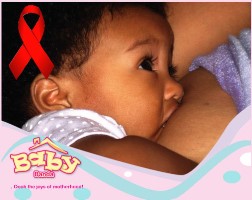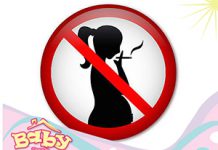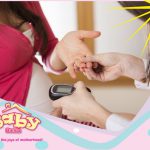Transmission of HIV Through Breastfeeding
According to the Ministry of Health, statistics show that 3 to 4 out of every 10 infants born to HIV infected women acquire HIV infection. Use of ARVS or Anti –HIV medication either for the mother or the infant significantly reduces the risk of HIV transmission from the mother to the child. Exclusive replacement feeding if done appropriately reduces the risk of HIV transmission but hygiene should be observed to avoid the risks of infections like diarrhoea and vomiting associated with it.
Feeding options for an HIV exposed infant include;
1. Exclusive breastfeeding with ARVS or anti-HIV medication
2. Exclusive Replacement Feeding
In Kenya, the following are the HIV operational guidelines for infant feeding
1. All mothers who are HIV negative or are of unknown HIV status should be encouraged and supported to exclusively breastfeed for the first 6 months and continue breastfeeding with appropriate complementary feeding introduced thereafter.
2. All HIV positive mothers should be given information on available infant feeding options and counselled using recent scientific information on benefits and challenges for each option in order to help them make an informed choice.
3. All HIV positive mothers who choose to breastfeed should be encouraged and supported to exclusively breastfeed for the first 6 months and continue breastfeeding up to 1 year with appropriate complementary feeds. Infants of these mothers should be provided with nevirapine prophylaxis for up to 1 week after complete cessation of breastfeeding.
4. HIV positive mothers who choose not to breastfeed should be encouraged and supported to do exclusive replacement feeding for the first six months and appropriate complementary feeding introduced thereafter. Infants of these mothers should be provided with nevirapine prophylaxis for 6 weeks.
5. In special circumstances determined by clinicians involving infants who cannot breastfeed e.g. orphans or abandoned babies or where the mother has a condition like mastitis preventing breastfeeding, the infant should be provided with exclusive replacement feeding for 6 months with appropriate complementary feeds introduced thereafter.
6. Complete cessation of breastfeeding is recommended at 12 months a time at which Infant ARV prophylaxis should be stopped (Stop ARVs for the infant at one week after complete cessation of breastfeeding).
Replacement Feeds
Replacement feeding is the process of feeding a child who is not breastfeeding with a diet that provides all the nutrients with the child needs until the child is fully fed on family food. Where replacement feeding is acceptable, feasible, affordable, sustainable and safe (AFASS), avoidance of breastfeeding by HIV-infected women is recommended (WHO 2006/9).
The choice of these feeds should be
Acceptable:
The mother perceives no barrier to replacement feeding. Barriers may have cultural or social reasons or be due to fear of stigma or discrimination.
Feasible:
The mother (or family) has adequate time, knowledge, skills and other resources to prepare the replacement food and feed the infant up to 12 times in 24 hours.
Affordable:
The mother and family, with the community or health-system support, if necessary, can pay for the cost of purchasing/producing, preparing and using replacement feeding, including all ingredients, fuel, clean water, soap and equipment, without compromising the health and nutrition of the family.
Sustainable:
Availability of a continuous and uninterrupted supply, and dependable system of distribution for all ingredients and products needed for safe replacement feeding, for as long as the infant needs it, up to one year of age or longer.
Safe:
Replacement foods are correctly and hygienically prepared and stored and fed in nutritionally adequate quantities with clean hands and using clean utensils, preferably by the cup.
NB: Modified animal’s milk is no longer recommended for children less than 6 months of age and so an appropriate infant formula should be used.
Feeding Children 6 months and older
1. Start complementary feeding at 6 months. Complementary foods should be introduced with continued breastfeeding or with replacement feeding until a nutritionally adequate diet can be sustained without milk. These foods should be prepared from locally available family foods.
2. For HIV exposed infants, continued ARVs for the infants should be provided up to complete cessation of breastfeeding. Abrupt cessation of breastfeeding is NO longer recommended as this causes psychological trauma for both the mother and the baby.
3. From 6 months, supplemental milk (infant formula or modified animal milk) can be introduced and should continue as an important component of the child’s diet.
Advantages of Exclusive breastfeeding
Evidence in favour of breastfeeding available from current research data shows that
• Increased risk of mortality with replacement feeding is significant.
• HIV free survival rate at 18 months of age does not significantly vary between an exclusively breastfed and exclusively replacement fed child.
• Modified animal’s milk is no longer recommended for children less than 6 months of age.
• Abrupt cessation of breastfeeding is no longer recommended.
• Exclusive breastfeeding (With ARVs) up to 6 months is recommended unless a mother chooses replacement feeding.
• If the breastfed infant is given solid foods (Mixed fed) before 6 months, the risk of HIV infection is eleven times as high as the exclusively breastfed infant.
Stopping to Breastfeed
1. While a mother is breastfeeding, teach her baby to drink expressed, unheated, breast milk from a cup. This milk may be heat-treated to destroy the HIV
2. Once the baby is drinking comfortably, replace one breastfeed with one cup-feed using expressed breast milk.
3. Increase the frequency of cup-feeding every few days and reduce the frequency of breastfeeding. Ask an adult family member to help cup-feed the baby.
4. Stop putting your baby to the breast completely as soon as you and the baby are accustomed to frequent cup-feeding. From this point on, it is best to heat-treat the breast milk.
5. If your baby is only receiving milk, check that he is passing enough urine – at least six wet nappies in every 24-hour period. This means that he is getting enough milk.
6. Gradually replace the expressed heat-treated breast milk with formula or home-modified animal milk.
7. If your baby needs to suck, give a clean finger instead of the breast.
8. To avoid breast engorgement (swelling) express a little milk whenever your breasts feel too full. This will help you feel more comfortable. Use cold compresses to reduce the inflammation. Wear a firm bra to prevent breast discomfort.
9. Do not begin breastfeeding again once you have stopped. If you do, you increase the chances of passing HIV to your baby. If your breasts become engorged, express the milk by hand and discard it.
Flash Heating of Breast Milk to kill the HIV Virus
How to flash-heat
• Always wash all utensils that you will use to express and heat treat your breast milk with clean water and soap. It is best to boil these utensils after washing to make sure that they are clean.
• Put all the milk you have expressed in a heat resistant glass (not plastic) jar. The amount of milk should be between 50 ml and 150 ml. If you have more milk, you may divide it into 2 jars.
• Place the jar of milk in a small pan of water. Make sure the water is about two fingers above the level of milk so that all the milk will be heated well.
• Heat the water on a very hot fire or on the highest level of your stove until it reaches a rolling boil (when the water has large bubbles). Stay close by because this should only take a few minutes. Leaving the water to boil too long will damage some of the nutrients in the milk.
• Remove the jar of milk from the boiling water immediately after the water comes to a boil. Place the jar in a container of cool water, or let it stand alone to cool until it reaches room temperature.
• Protect the milk as it cools and during storage by placing a clean lid or small plate on it.
• You can safely feed your baby this heated milk within 6-8 hours. If you put in the fridge you can use it within 12 hours.













